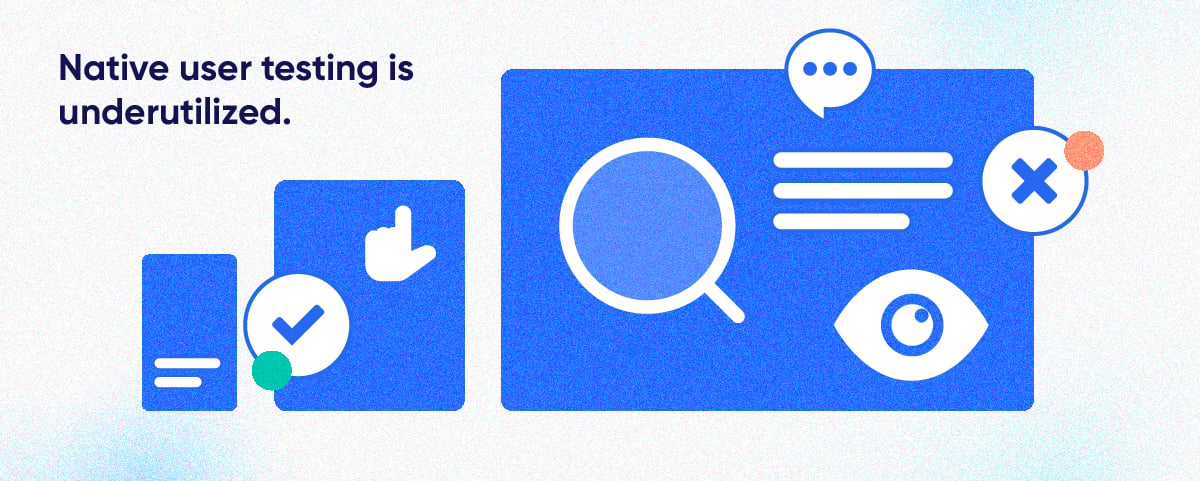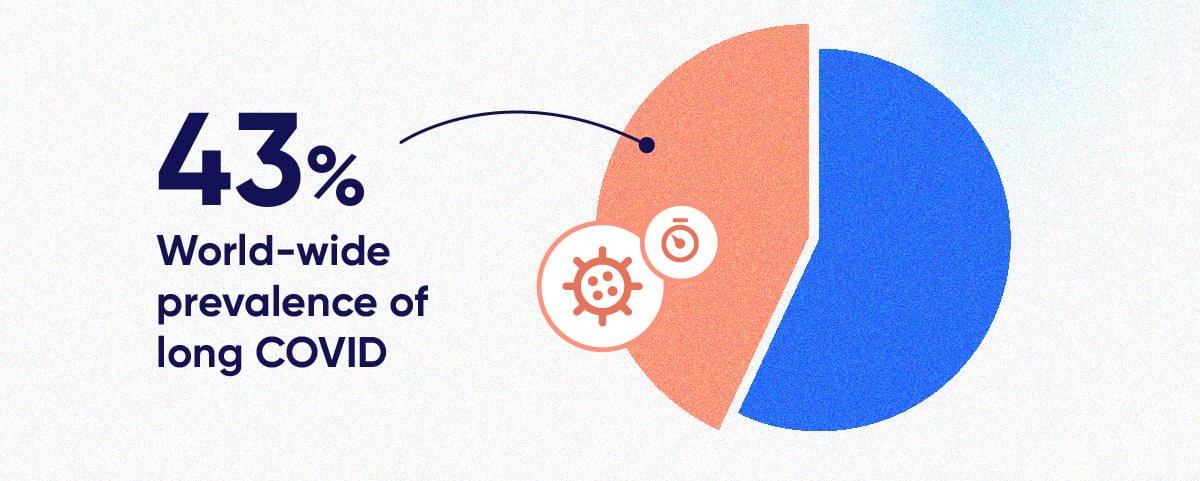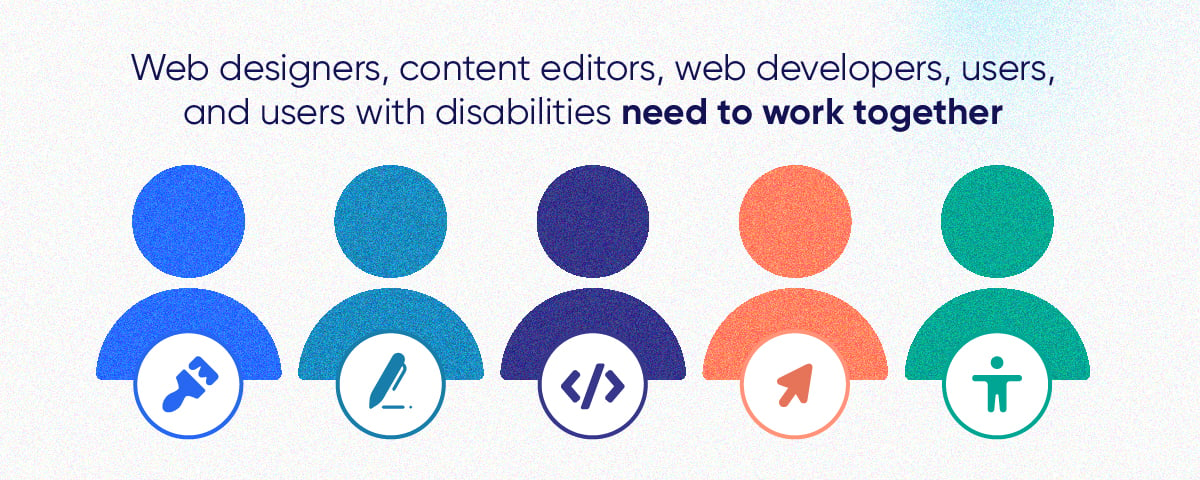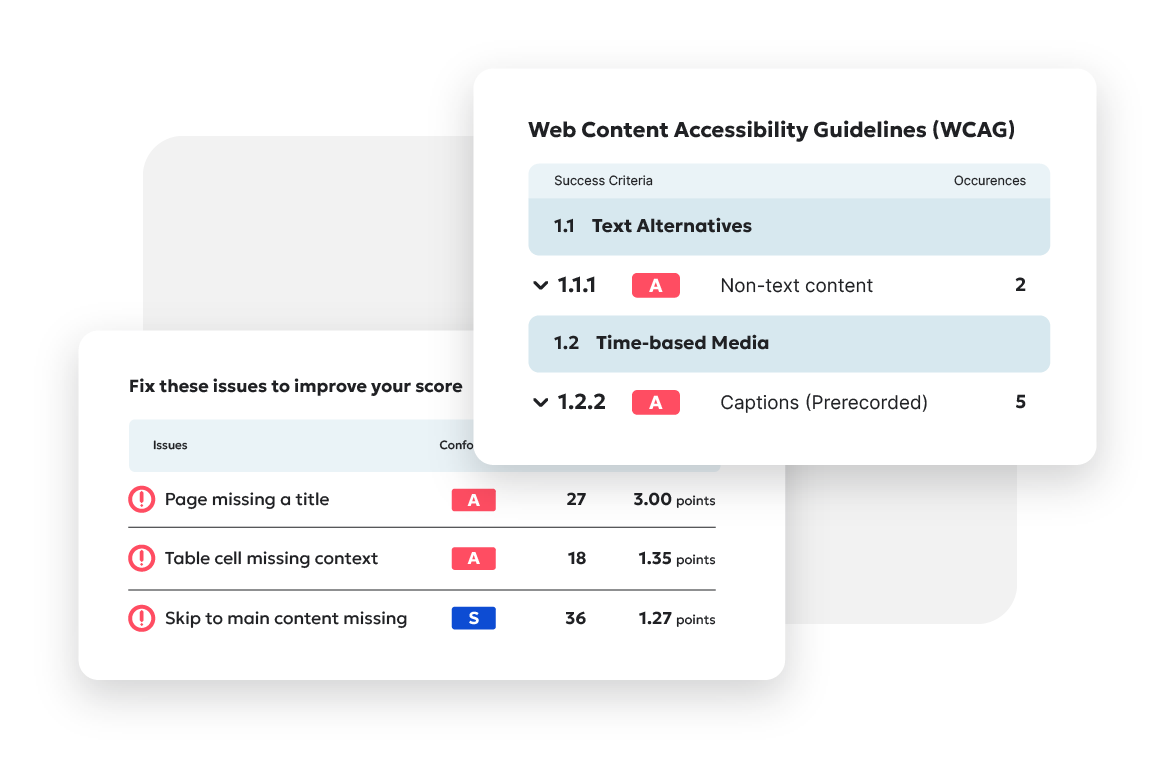Why CSUN AT taught us that in accessibility, perspective is everything
- By Beth Kwakenat, Accessibility Analyst - May 10, 2022 Accessibility
Even after years of working in accessibility, my Siteimprove colleagues and I were blown away by the Annual Assistive Technology Conference (CSUN AT) held by California State University at Northridge. To call CSUN AT an eye-opening experience would not do it justice. Between expert speakers, networking opportunities, and real user perspectives, we learned more about accessibility than we could’ve ever imagined.
Outside the scheduled events, the conference accommodated every need you can think of – and even the ones you haven’t. At the welcome reception, there were enough available tables that deaf individuals had places to set their drinks while they communicated. There were both high and low tables to accommodate the needs and preferences of the attendees. Even our nametags made it easier to share contact information.
We were surrounded by an impassioned community driven by accessibility, customers sharing their stories, and individuals with disabilities providing insight into their experiences. Many of us work behind the scenes, so the opportunity to be around so many people who might be positively impacted by what we do at Siteimprove was inspiring. Opportunities to learn were around every corner, and the expert speakers certainly did not disappoint.
Highlights from SI speakers
Keith Bundy, Accessibility Community Consultant, gave a presentation entitled Making Web Accessibility a Priority. He dove into what it means to be WCAG 2.1. compliant and encouraged everyone to prioritize accessibility because it is financially important, will help you avoid the legal landscape, and because it is the right thing to do. Guests left the session with more insights on how to begin the accessibility journey, including information on website audits, manual vs. automated testing, and what constitutes an accessibility plan and statement.
Keith also presented "Browsing the Web with a Screen Reader." Keith provided perspective by breaking down how a screen reader processes nearly everything on a webpage; from links to forms to images. People who had never experienced a screen reader before were surprised by the accessibility barriers some of their favorite sites had.
Another CSUN AT veteran, Digital Accessibility Software Engineer Christina Adams, gave a more technical presentation on Ems, Rems, and Flexible Interfaces. She shared how selecting the right content sizing techniques during web design and development can create a positive experience for all users and is an accessibility must.
Key learnings
What was the most important learning from the conference? There’s always more to learn about accessibility. Often, assumptions are what lead us astray. Native user testing is one way for companies to avoid incorrect assumptions and, as we learned, is vastly underused. Understanding how people with disabilities use assistive technologies provides critical insight that non-native users might miss.

Here are a few other things that surprised us:
- We tend to assume someone needs our help rather than assuming they can function independently. By jumping in to “save” someone from bumping into an obstacle, for example, we take away their autonomy.
- Spell-checkers and autocomplete aren't very helpful for people with dyslexia. If I type a word and my fingers aren't hitting the right keys, spell-checkers often don't know what word I meant and just tell me I made a mistake.
- Our definition of cognitive disabilities was limited. Post-conference, we now know of other issues that fall under the cognitive disability umbrella, including migraine, anxiety, and PTSD.
New challenges
Of the accessibility challenges on the horizon, long COVID was commonly discussed. More than 1 in 4 people who have had COVID could be impacted. In fact, a recent study noted the world-wide prevalence of long COVID is 43%. Regardless of the severity of their initial infection, long COVID can cause numerous neurological and physical symptoms, including brain fog, blurred vision, and muscle weakness.

Content creators and marketing teams need to keep in mind that people with long COVID often must work harder to interpret websites. For example, they may not be able to see small text on your website because of blurred vision. Brain fog can make it harder to comprehend long paragraphs, complicated jargon, and website content that auto-updates. And users who suffer from muscle weakness may not be able to use a mouse effectively.
Updating your website to be more accessible for visitors with long COVID is not only important for them, but for every visitor. Clean, clear, and easy to use websites provide all users with a better browsing experience, making your site more likely to be revisited and recommended to others.
Old challenges
We were disheartened to realize that, while accessibility professionals are unanimously focused on digital and physical inclusivity, the business world is not. Organizations aren't putting the necessary time and money towards institutional change, and it matters.
For example, one Siteimprover described how difficult it can be to make his way around venues without a visual interpreting service. These services use an app installed on a smart phone and phone camera to connect users with trained agents who provide real-time, live descriptions of anything the users need to "see." One of the vendors at the conference partnered with the hotel to supply this service, and maps were provided within the service and in the CSUN AT programs.
Websites are much like venues in that way. Some are well laid out, have sitemaps and accessible navigation, and provide explanations for what can be seen on the page. Other sites aren't accessible or are missing key accessibility components. Users have trouble getting around, get frustrated, and choose to take their business elsewhere.
Building a culture of accessibility
For most organizations, digital accessibility can be rather nebulous. They know they need to make broad changes to their websites to make them accessible, but it is a daunting task.
The message at CSUN AT was clear; organizations must build digital accessibility into their culture. They need accessibility champions – people who are passionate about accessibility and willing to push for institutional change.

Several presenters at the conference recommended bringing together a group of people, including web designers, content editors, web developers, and users (including users with disabilities), to address accessibility issues. Dividing the work across roles will produce an outcome that is more structurally sound, easy to use, and appealing.
Accessibility is a civil right
We believe organizations need to send staff from every level of the company to events like this one. Conferences like CSUN AT provide attendees a unique opportunity to focus on accessibility and meet like-minded people. They also reinforce the importance of making the physical and digital world more accessible. As attorney Lainey Feingold reminded us in her presentation on the accessibility legal landscape, accessibility is more than just a compliance issue: accessibility is a civil right.

Ready to create more accessible and inclusive web content?
Siteimprove Accessibility can help you create an inclusive digital presence for all.
Request a demo